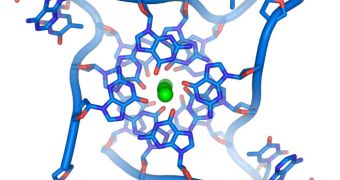For many years, genetics experts believed that deoxyribonucleic acid (DNA) is only capable of stretching inside living cells if it had loose-hanging, single strands called free ends. A new study shows that these structures' presence is not necessarily required to have elastic DNA.
From the time it first develops, DNA is springy, stretchy and coiled, but also capable of a property called overstretching. This term refers to the amount of stretching the acid's double helix structure can take before giving away.
In the new investigation, researchers took a closer look at the processes and mechanisms underlying overstretching, and determined that they are not as clear-cut as established in past researches.
Scientists determined that the acid could very well be stretched even if it did not contain free ends. In addition, it was found that the helices could nearly double their length from the same elastic stretching point, a fact that also contradicts the old theories.
Researchers from the Boulder, Colorado-based US National Institute of Standards and Technology (NIST) conducted this genetic study. Among the conclusions was that DNA only acts as a well-behaved Slink under tiny forces.
In these situations, the DNA molecules act just like molecular theory predicts. But when the small structures are pulled apart using optical traps, they appear to become even more elastic.
When a force of 65 piconewtons was applied on the DNA, experts determined that its molecules elongated by more than 70 percent. A piconewton is the gravitational force of a common apple, Science News reports.
“Within a few piconewtons, the molecule goes from normal DNA to overstretched DNA,” explains Thomas Perkins, a NIST biophysicist, and also a coauthor of the research paper.
In order to establish that the molecular behavior of DNA under force was not dictated by free ends, the team used small loops of the acid to keep other samples pinned down, and then used the optical traps to pull on the anchored molecules.
Even under these conditions, the DNA was still overstretched when a force of 65 piconewtons was applied. Some investigators propose that this force may be a threshold for genetic materials in general.

 14 DAY TRIAL //
14 DAY TRIAL //